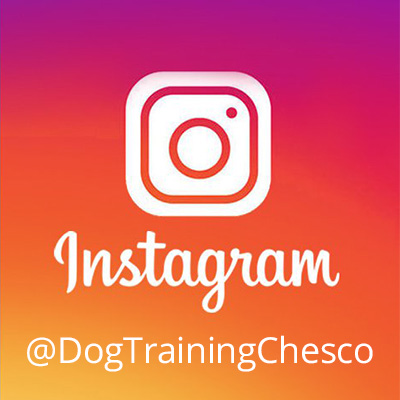A Partial History of the Dog Training Club of Chester County: First Three Decades
by Janet Amighi with Carley Bates, Chris Civil, Barb DeMascio, Barb Doran, Barb Eng, Alice Moyer, Shirlee O’Neill, Linda Peterson, Sabine Platten, Scott Sensenig, Shirley Thompson, Lynne Young.
Compiled from interviews with club members, newspapers, and google searches, 06/2025
I never thought much about the earlier years of the dog training club, but came to find out it has quite the history!! My sources for this history include interviews with past and present members, and online research.
Background History of Dog Training and Showing in Europe
We know that people have been training dogs, in herding and hunting in particular for thousands of years. There is a dog training manual by Albertus Magnus for the 13th century. In the US we have taken much of our training of dogs from England and Germany, but have some of our own great inspirations.
The first shows in 1700’s England were informal, as groups of friends got together to show off their breeding and field dogs to one another. These “events” often took place at local taverns with townspeople cheering their favorites. By the 1800’s in England farm fairs often included an entertainment event such as dog jumping, dogs doing field work, or breed exhibitions and friendly competitions. For example, setters and pointers participated in a gun dog competition during the annual cattle show in New Castle England in 1859. Winning dogs and owners received guns as prizes from W.R. Pape, the Bench Show Chairman’s gun factory.
The show caused a sensation and soon hundreds of people wanted to compete with their dogs. In 1863 a thousand dogs competed in one show with 100,000 in the audience. By 1873 a group of men had set up formal rules for competitions and founded the British Kennel Club.
In 1910, a Colonel Konrad Most wrote a book based on his work with dogs during wartime and dogs for the blind, focused on simple dog owners. He used harsh methods but also offered ideas which seem very modern such as idea of primary and second “inducements.” He also introduced shaping, fading, and chaining. He recommended using gentle tones to reward dogs.
Early Dog Training in the US: Breed and Obedience
Informal competitions came to (or sprang up in) the US as well. The earliest organized dog competitions in the US similarly centered on sporting dogs. The first formal show began in 1874. In 1877 the Philadelphia Kennel Club (yay hometown) and West Minster Kennel Club created formal shows in Philly and at Gilmore’s Garden which became Madison Square Garden in NY. People then started to become interested in breeding the best dogs for work and competitions. It was as a stud registry that the American Kennel Club (AKC) began.
Obedience Training
Interest in good obedience for dogs began in the 1920s in the US. Interested owners might send their dogs to board for training. Some local groups trained obedience together. Movie star Rin Tin Tin, a dog used in WWI, showed off great exploits which attracted a lot of attention and induced many to have their dogs trained as well. In fact, the slogan of the first obedience show was “Train your dog.” Some of us did quite well with untrained but mannerly dogs in the early decades of the 20th century.
One of the founders of formal obedience training in the US, Helene Whitehouse Walker, had standard poodles and she wanted to showcase their intelligence. She established the sport formally in 1933 with the first competitions on her estate. She and her friend Blanche Saunders traveled with a 20 foot trailer cross country giving obedience workshops and demos. The first obedience club opened some time between 1937 and1941. Saunders herself gave demos during half time at Yankee Stadium, publicizing obedience as a sport to thousands. In 1954 Blanche Saunders published probably the first modern day book outlining obedience training specifically.
Training generally relied on aversive methods. Bill Koehler, of military background, became a well known trainer. He used choke chain corrections, throwing chains at dogs to get them to come, an intensive training schedule such as 25 sit, heel, etc commands each day. Some trainers thought dogs should be in their crates all the time, so to be happy to come and work with handlers. One of the ways trainers taught down were, pushing down the haunches backward, or pulling front legs out from under them. When criticized for harsh methods, Koehler responded that by seven weeks of training, dogs trained in his method should have learned to heel off leash and harsh methods would become significantly reduced. When dogs did well they were to be lavishly praised. These methods were widely used by dog clubs including DTCCC. Some integrated Colonel Most’s approaches of giving “inducements.”
First Decade of the Dog Training Club of Chester County: 1975-85
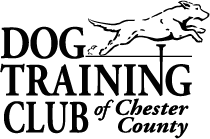
The founders of the Dog Training Club of Chester County (DTCCC), included Sophie Mayes who essentially ran the club. Everyone would say, “Oh don’t do that. Sophie wouldn’t like it.” There were about 7 women. Sophie Mayes was the earliest head instructor in obedience training which was the focus of the club. Instructors didn’t have any certifications then but there were traveling seminars all the time so instructors could attend and learn. General members also attended. Formalized dog training was in its infancy so everyone to some extent was learning together. Unfortunately, none of the founding members are still alive and available to tell us their motivations for starting this organization up as a club rather than a commercial operation but it seems evident that the club had a strong social component from the start.
The earliest location of club classes was Exton Elementary School, primarily in the winter. They used the school gym. There were heavy green mats to spread out so dogs did not slip nor scratch up the gym floor. After class members had to roll the mats up again and stack them along the side in gym.
Barb Eng recalled that after some time the school, which had not charged us rent, evicted us. We were able to obtain use of the Montgomery Day School off rt. 113. We also did obedience and drill team practice at a place called The Barn because it was a barn. In summer we worked outside. Shirley Eslby had a pool and we used to have pool parties at her house. We brought the dogs, if we wanted to. She had very friendly Rotweilers.
The Club was essentially an obedience club, as this was the main dog sport of the time. There were no classes specifically for puppies. They would join into beginners’ classes.
The club had a good reputation for the best obedience matches. One individual who usually placed at the famous show at Crufts in England, would come to our matches before Crufts, even though the exercises are quite different. Barb Sieck, obedience instructor, ran the club’s matches. Judges all knew Barb Sieck and would show up to judge matches for her. With a large space, the club was able to run legal size rings.

One of the highlights was the drill team. Members practiced together and then went and performed at various venues such as hospitals, schools and wherever they were invited. The demo team or drill team had about twenty members and was led for years by Anne Grant. The last leader was Barb Morrison. They often received some compensation which they donated. It disbanded in about 2010 when Barb resigned.
The first formal therapy dog organization was launched in NJ in 1976 by Elaine Smith. She noticed how positively impacted people were after being visited by a chaplain who came with his dog. Our club began getting involved just before that. The drill team was a springboard for it. When Therapy Dogs International (TDI) got going, several members joined in order to gain certification, insurance, and acceptance at venues. Lynne Young was a certified TDI evaluator and also organized group visits.
The Second Decade: 1988-98 Club Growth
Members were eager for more training and different competition opportunities so it is not surprising that they lapped up new sports as they first came to America or were developed here.
Agility
Agility was the next dog sport to come to the club. Here is how the sport began. In advance of the 1978 Crufts annual show (the large British dog show), the show committee tasked John Varley to create an event that would entertain the audience between the existing conformation and obedience segments. Varley was from the horse world and based his idea of agility on horse jumping sports, but he wisely brought in a dog trainer, Peter Meanwell, hoping that together they would create a lively demonstration. They borrowed ideas from the border collie jumping competitions at local English fairs and search and rescue dog training, thus adding a tire jump, tunnels and a catwalk-which was changed to be called a dog walk. They continued using Border Collies as the standard for jump heights, 30 inches. The course followed a figure 8 shape.

Inevitably a few US dog trainers attended Crufts in those early years and brought home the concept called agility. One of the early founders on the east coast was Bud Kramer. Bud emphasized that the sport should be open to all dogs and thus there should be three jump heights and no time qualifications. Thirty breeds entered the first national championships here. Bud Kramer founded the National Club for Dog Agility (NCDA), laying down rules for the new sport. Kramer wrote his award-winning book on agility and gave seminars even before he founded NCDA.
Ray Tanner, a trainer at DTCCC had heard about “agility” and invited Bud Kramer to come and give a seminar about the new sport. Afterwards DTCCC sponsored him to give a demo at the Philadelphia Dog Show in 1987. There were several local trainers in attendance who were excited about it. One of them was Alaina Axford Moore, who then founded the Keystone Agility Club in Barto. By the following year DTCCC had their own team doing agility demos at the Philly show, at Ludwig’s Corner and elsewhere, lugging the equipment in a trailer. Shirley Thompson was there at the Philly show and said she was “gobsmacked” by agility. She tracked down DTCCC and joined up.

Shirley Thompson recalled that in those days there were no such things as front and rear crosses, you just turned when you needed to. There were try outs to join agility- Sandy Costello was teaching then. In the first class you were doing all the equipment right away, A-frame, chicken wire chutes on six poles, teeter, dog walk, but everything was big and heavy. We bought the tunnels.
Shirlee O’Neill said, we were the Sparks: stop, pause, and run canines.
We did lots of demos especially as there were few shows to go to. One of the big differences is that everyone had obedience training; obedience was the foundation work for agility. The dogs were used to working outdoors off leash, they had a lot of skills. It was more challenging for obedience trainers to learn to work their dogs on the right side and to give up leash corrections. But for a while we did have a place at Montgomery School which was pretty secluded and safe. They decided to join Kramer’s NDCA.
The United States Dog Agility Association (USDAA), which is the largest agility organization today, was started in 1986 by Ken Tatsch, with the help of Sandra Davis. Tatsch, like Kramer, had first seen agility at the Crufts demo. They held their first show in Houston and were West Coast oriented. They more closely followed the British standard. The AKC began doing agility trials in the 1990s.
At DTCCC, agility had a high table and four ramps going up to the table, which became too cumbersome. A sway bridge stayed for a while but became dangerous as dogs got faster. In those earlier days those jumps were unique, colorful, fun to make together, but slowly as we got companies who were making the jumps, that ended. It was in the northeast that agility first went inside, because of the weather. Because of limited space, it became more important to have lighter equipment, easier to move to the side when class space was needed for obedience.
Everyone training and competing in agility knew each other, so like in the DTCCC obedience club it was a supportive group with many different breed dogs competing. Most of the early dogs were on the large side. One DTCCC person had four Border Collies. The instructors were Shirlee O’Neill, Barb DeMasio, Shirley Thompson, Denise Lacey, and more recently Nancy Schilling and Nancy Fitzgerald.

The addition of agility brought a lot to the club, new opportunities for engaging in a lively sport that dogs often loved and the need for new methods of training. However, agility training needed expensive equipment, more space for training and competitions, more storage space for equipment, and would get in the way of puppy classes. The larger space needed increased the cost a lot and it was getting difficult to find large outdoor spaces. Some of the obedience club members wanted to keep the club as an obedience club. There was also a division between the obedience members who didn’t want to join AKC and the agility competitors who did. As a result of the split, most agility competitors left and founded Tailblazers in 1999. Later Sabine Platten decided to revive agility and she brought back Barb DeMascio to teach. We’ve had agility ever since although methods have changed as well as trainers.
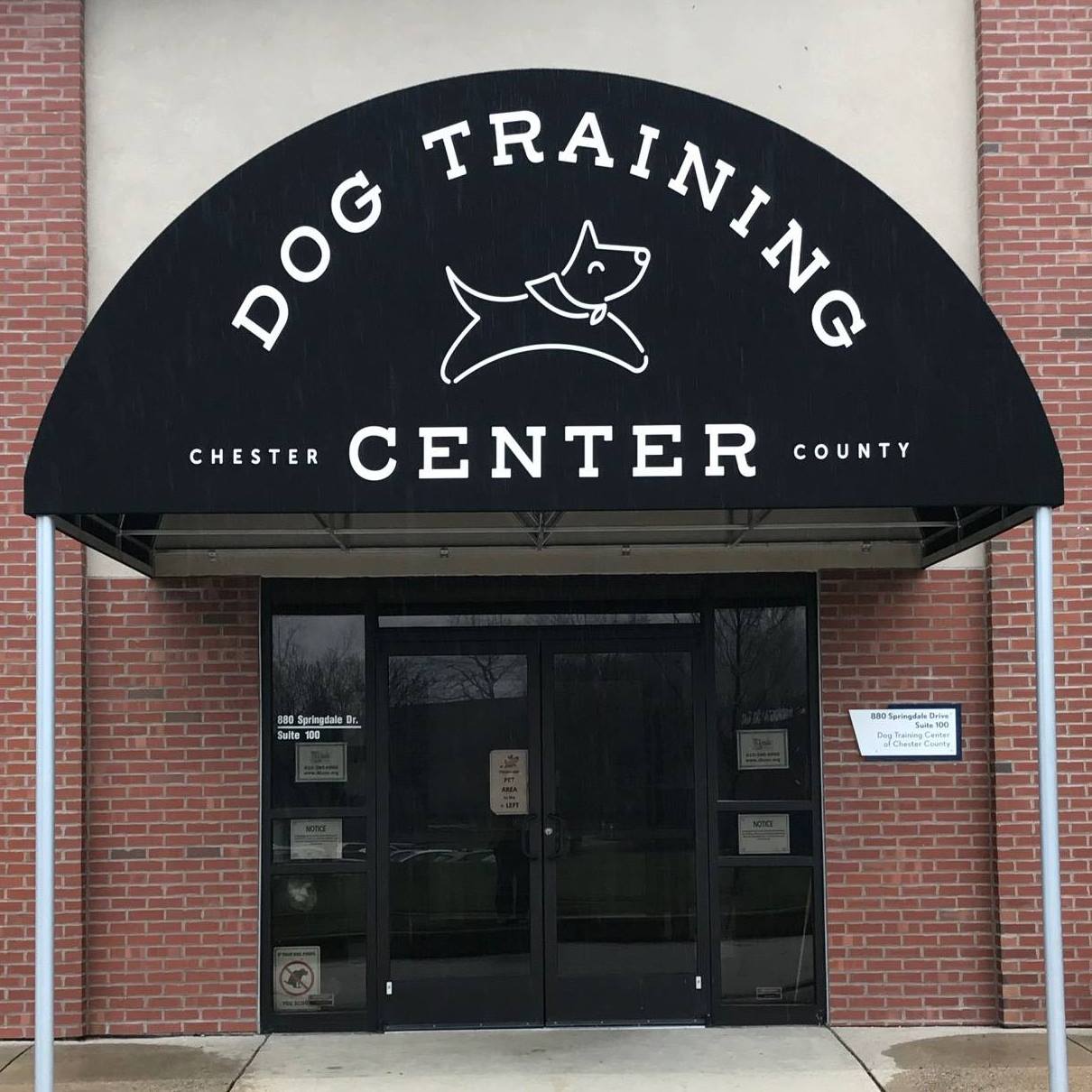
The issue for agility was space, space to train and space to store equipment. After they were told that Montgomery School couldn’t host them anymore, they settled in at Lois Fair’s place at the Aschenfelter Estate. She had the manager’s house. They were able to store the beautiful hand-made jumps there, but had to put them away before dark.
They would have a meeting after training, everyone crammed into her dining room. Then once more the club had to leave because the Aschenfelters were renovating the barn. There were enough members by then to start looking for a place that could be more permanent.
The next place the club landed was the place behind our present location on Springdale Drive, Exton.
Coming of Positive Reinforcement and Clicker Training
Most people who do much dog training are familiar with the story of Karen Pryor and her work with dolphins and clicker training. With an avid scientific mindset, she set out to train marine mammals for shows at the newly built Sea Life Park in Hawaii in the 1960s. She couldn’t use corrections because dolphins would go sulk in the deep end of the pool. So she used a training worksheet written up by Ron Turner, a researcher and student of B.F. Skinner’s work with operant conditioning. Turner wrote about using a marker like Skinner’s bell to let the animal know the reward was coming. From this Pryor began using a whistle to shape the dolphin behavior. The idea of a “clicker” was developed for training other species. The clicker was used not just to indicate that a reinforcement was coming, but to mark what behavior was being reinforced. She came to adopt this method for use with dogs and even suggested that it could be used for spouses (as long as you don’t tell them what you are doing) in her still famous book, Don’t Shoot the Dog, 1984. She emphasized building a positive bond with the dog as she had with dolphins.
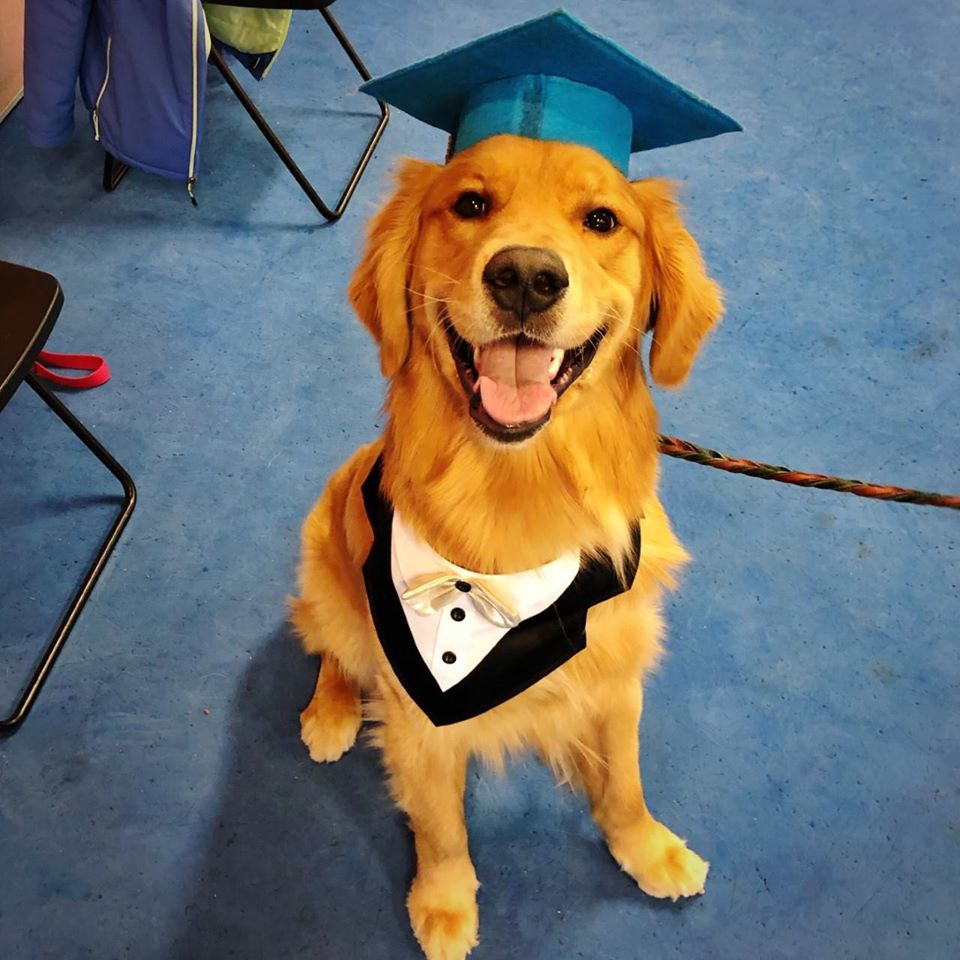
Karen Pryor and her associate, Gary Wilkes went around the country doing seminars in the 1990s. She promoted clicker training and he “balanced” training using aversives, an odd pair they were. Several club people, such as Chris Civil and Sabine Platten, attended and were impressed with clicker training and the positive reinforcement focus. Other DTCCC trainers also went to seminars and decided you could get more flies with honey. Well known dog trainers came to the club promoting positive training such as Leslie Nelson, Patti Ruzzo, and Ian Dunbar. Ray Tanner, head instructor for a while, also promoted positive training.
The change over to primarily positive training did not happen as a sudden change with complete abandonment of compulsive training. Many instructors were using combinations. But over time, DTCCC became more and more dedicated to positive-only training and most instructors were happy to make the change. The main factors were the seminars and upcoming focus on positive training, agility where dogs were off-leash and at a distance from handlers, and a general attitude against corporal training with children.
Puppy Classes
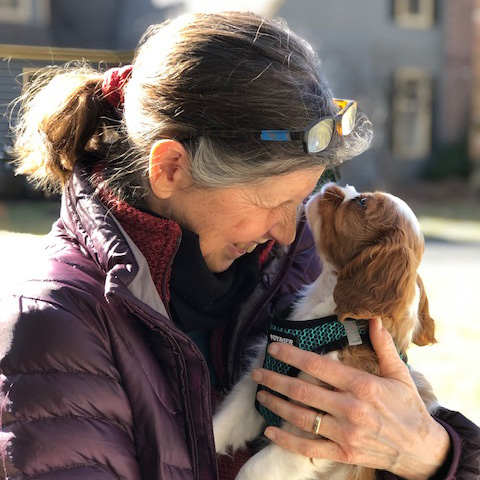
Veterinarian Ian Dunbar began a mission to have dog training facilities offer kindergarten classes for puppies. He argued that these classes should help puppies socialize and learn basic skills such as attention and recall in a puppy friendly way. He came to DTCCC in the mid-1990’s and his methods revolutionized puppy training here and elsewhere. He also emphasized positive methods. In 1994 Ian Dunbar started the Association of Pet Dog Trainers (APDT) to help raise levels of instruction and increase standardization.
Having puppy classes was very impactful. Instructors could see how puppies of the same age could have such different personalities and ways of learning. This emphasized the value of having different approaches adapted to individual dogs.
At the same time, the club was growing in membership size. New instructors were hired, many more classes were offered with the availability of the larger facility. The club members were often eager to embrace new sports, and the enrichment it brought, but the growth of the club and introduction of new sports also brought new challenges.
The Third Decade: 1998-2008
Rally

With the 21st century, again new sports were rising and being publicized. In 2000 Bud Kramer developed Rally Obedience as a way to make obedience training more lighted-hearted and fun. He took his inspiration from the warm-up doodling that people often did with their dogs before going into the obedience ring. He saw it as using big spaces with lots of flow. In 2001 word of Rally Obedience spread to the club and in 2002, Kramer himself came again to offer a seminar.
Chris Civil, Sabine Platten, and Lynne Young were instrumental in promoting interest and began training at the club. Sabine attended Camp Gone to the Dogs where there was rally training as well. It was very confidence building for handlers and dogs in that competitors were allowed to use food in the ring during APDT sanctioned trials; they could talk to their dogs and encourage them. It too gained popularity.
Nose Work
Odor or Nose Work for dogs as a sport had its origins in professional work as has track and field work with dogs. Ron Gaunt, Jill Marie O’Brian, and Amy Herot all had worked with scent detection dogs seeking out corpses, explosives, buried survivors of disasters etc. They quickly noticed how much the dogs enjoyed their work. Although not all dogs and handlers are able to do detection work, they decided that all dogs could enjoy it as a sport. So, they combined scent detection principles with handler friendly training methods to create a new sport in the early 21st century. In 2009 they founded the National Association Of Canine Scent Work (NACSW).
Lynne Young, instructor at DTCCC, attended the earliest seminars given in the area, in 2006. She offered a class in nose work at DTCCC while development of the sport was still in progress. She would go off to seminars mostly with Ron Gaunt in different locations every month and would then come back, telling students about new rules or changed methods. In the beginning, they had dogs search for people hiding in closets, keys, almost anything (see film). Then in 2007-8 they began using target odors, essential oils such as birch, anise and clove. These oils give out strong scents that spread quickly. They soon fastened on pairing odor with food in assortments of boxes, suitcases, and eventually at different height levels. Vehicle searches and the scent inside water containers came later.
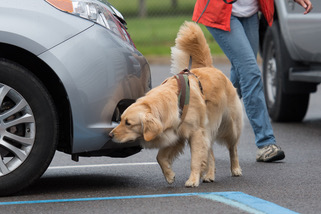
Lynne told us it was expensive for her to take seminar trainings and wondered if nose work would catch on. Linda Peterson thought it would and of course it did.
A new class has developed as part of nose work, called Handler Discrimination. The dog is required to distinguish the scent of their handler. This surprisingly is more difficult than distinguishing essential oils. Dead skin cells, bacteria, and body oils have a less penetrating scent, and our scent is influenced by what has recently been eaten and our hormones. The distinction is more difficult and dogs may take longer to learn them.
Canine Freestyle, Trick Training, and More
If we look at the progression of sports from obedience to agility and rally to nose work a few patterns are clear, the sports have become less fixed, that is there is more variation in the dog and handler’s work, and the sports have become more dog friendly and draw more on natural skills and proclivities of dogs. Barn hunt, fast cat, tracking, herding, and parkour also continue this trajectory. However, there are also new sports which are based more on handler appeal.
Denise Lacey taught the first class in canine freestyle at DTCCC in about 2004. Since then Sabine Platten has followed up. Her second level class approximates drill team work. Freestyle builds on the pleasure of costuming, choreography, dancing, music, and dog training. While dogs may not necessarily enjoy doing some of the intricate moves of freestyle, there are some enjoyable ones such as jumping, heeling fast, spinning, figure eights, and backing through handlers legs (why this is fun I am not sure), and the close working together involved in freestyle. The founder of the largest freestyle organization World Canine Freestyle Organization, hoped that freestyle would become an Olympic sport, but without her great marketing skills since she was killed, and the difficulty involved in the sport, it has not gotten as big of an audience in the US as it has in many countries abroad (Japan, Russia, England, Hungary, South Africa, Canada, et al.).
Denise Lacey held one of the first classes in trick training at the club. It had a slow beginning perhaps because it was not competition or title oriented in the early 2000s. With the development of the AKC title and other trick titles, trick training has become more and more popular at DTCCC. It is often fun for dogs and good for handlers seeking to improve their shaping and clicker training skills.
For a while Treiball was taught by Nancy Schilling. There has been a fetch competition, and Parkour class, Control Unleashed, and many skill based classes on shaping, recall, obstacles, copy that, breed show classes, puppy classes etc.

Conclusion
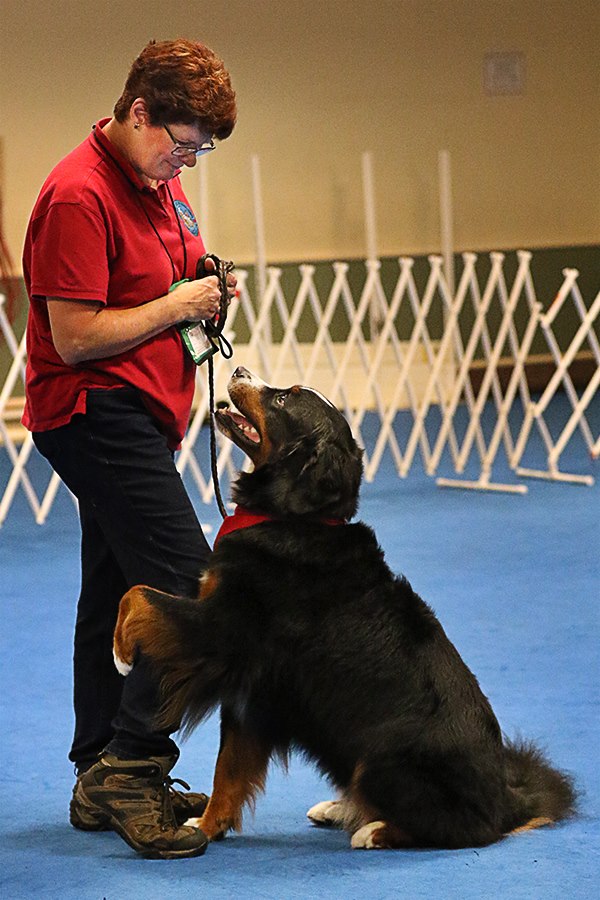
The Dog Training Club of Chester County has evolved much over the decades, increasing its training spaces, membership size, and number and variety of classes. It continues to have social events, offers volunteer work, a pet shop, rental space, competitions, as well as classes. Today there is so much more information available on dog training, books and online and in person seminars, and classes, that we sometimes have information overload. With the increased number and diversity of classes, the club has tried to keep up the social aspect as well though it is a more challenging task than it was during the early days. From the beginning of the adoption of agility to now, diversity has been exciting but also creates stresses as differences in priorities emerge.
It is gratifying to know that our club contributed to bringing in new sports, especially agility, rally, and nose work and new training techniques. The club has held together, continued to add new classes and offer new strategies for training over the years. Rather than being a business, it is a club which however imperfect, it offers democratic venues, chances for membership input, and places for disputes as well. It has demonstrated, and continues to demonstrate, the value of having a training club despite the challenges that it brings. Thank you DTCCC for being here still.

